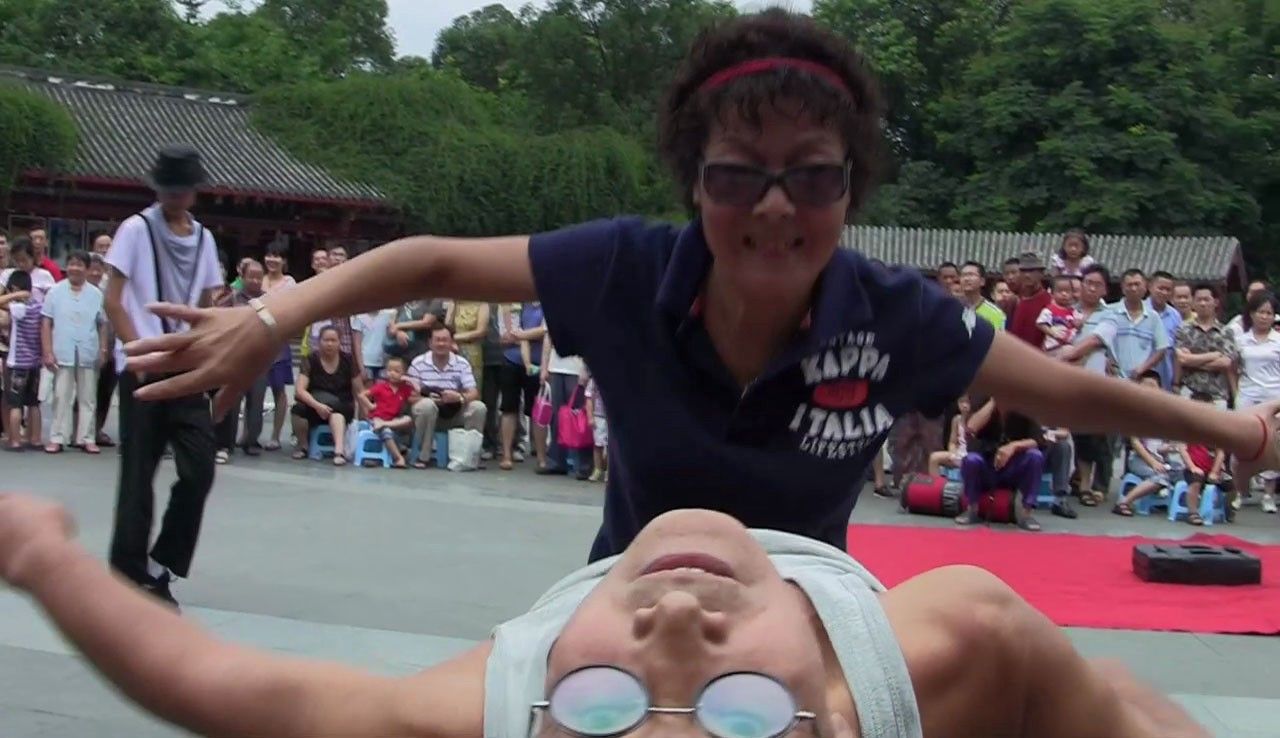People’s Park (JP Sniadecki & Libbie Cohn, 2012)

A few thoughts I jotted down while watching People’s Park, a single-take documentary set in a park in the city of Chengdu, Sichuan by directors JP Sniadecki and Libbie Cohn:
- So this is a lot like Russian Ark, the single-take trip through the Hermitage directed by Alexander Sokurov, except that film was fictional and moved freely through time as it compressed and stretched hundreds of years of history into its one shot, whereas this film is a real-time documentary, and therefore rooted in the present. A present which is now past, but that’s beside the point.
- There’s no subtitles and no story. Nothing appears to have been staged for the camera. But we’re narrative-creating beings and not even the simple act of people-watching can stop us from making up little stories about the faces we see. That kid is sad, that man is hungry, those people are in love, those people can barely stand to talk to each other, etc.
- As the camera tracks along a bend in a small stream, the next film that comes to mind is Renoir’s A Day in the Country. And also People on Sunday. Great films from the thirties about middle class Europeans hanging out in public parks on sunny afternoons.
- Also the city symphony genre (À propos de Nice, Man with a Movie Camera). Why did they stop making those?
- These middle class Chinese folk are no different. In fact, they seem thoroughly Westernized. One guy flashes a peace sign at the camera. Almost everyone wears Western clothes. I see: jeans, T-shirts, slacks, print dresses, polo shirts, cargo shorts, sneakers, capri pants, cowboy hats. I wonder if these clothes have been adopted because they’re ‘evolutionarily’ better than traditional Eastern clothing, or is it cultural, Hollywood, imperialism, like the way Clark Gable killed the undershirt industry with It Happened One Night, or James Dean caused a boom in blue jeans?
- Is there a specific term for fashion historians? What are their internal disputes like? Are there competing models of fashion history? Are there leftist factions that rail against the imperialist machine? Do they advocate a revolutionary fashion as a consciousness-raising measure? Do they assert that you can’t fight the fashion hegemony while wearing the clothing style of the elites?
- That said, there is one big difference between their clothes and what you’d see in any given US city park: an almost total lack of logos, either corporate or team sports-related. In general there are just a lot fewer shirts with writing on them.
- There’s so much music in this park. A band decked out in orange and white polo shirts leading a sing-along. People dancing in a square, not quite in time to the music coming from a loudspeaker. A long arcade is home to a band playing traditional Chinese instruments, as well as a group of people doing karaoke.
- The sounds in the arcade clash, reverberating against its columns creating an atonal distortion much like that Charles Ives recreated in “Central Park in the Dark”, which captures the sonic experience of walking through the park as sounds fade in and out, inspired by his father’s habit of sending two marching bands in opposite directions around a square, smashing their sounds together and breaking them apart.
- After cruising through the cacophonous arcade, suddenly we break back outside where we see: couples dancing a waltz. A breath of classical air after the oppressively fuzzy modernity.
- Near yet another band playing, there’s a man doing calligraphy in water on the stone walkway. Nearby is a kebab stand selling hot dogs on sticks. Meats on sticks is a universal human value.
- In the end we’re back where we started: a group of people dancing to pop music (Michael Jackson is also a universal human value) in a large plaza. These dancers are more professional than the out-of-time folks that started the film though. They seem like a descendant of Jia Zhangke’s breakdancing troupe from Platform. Except for the old man who dances with a chicken. I have no idea where that comes from.
